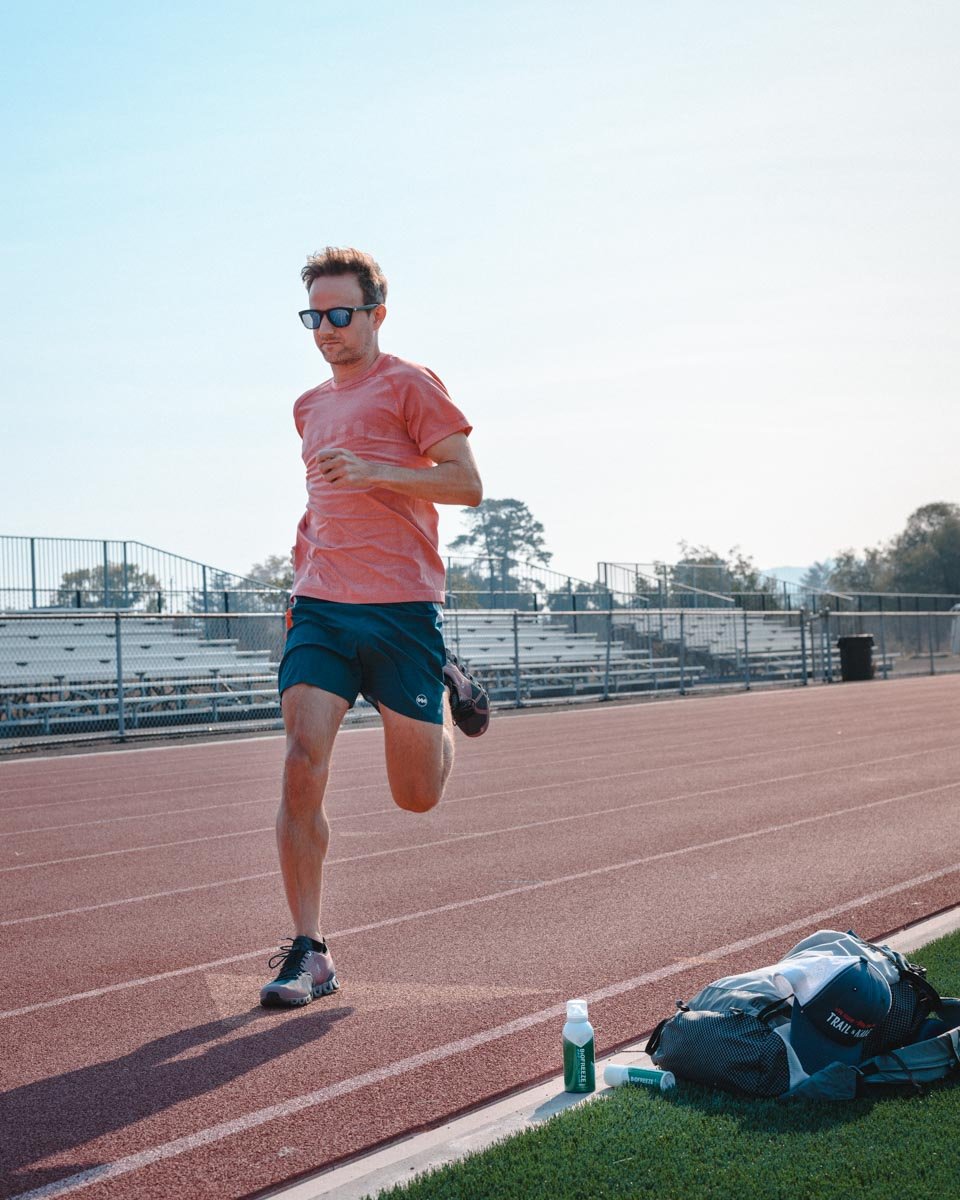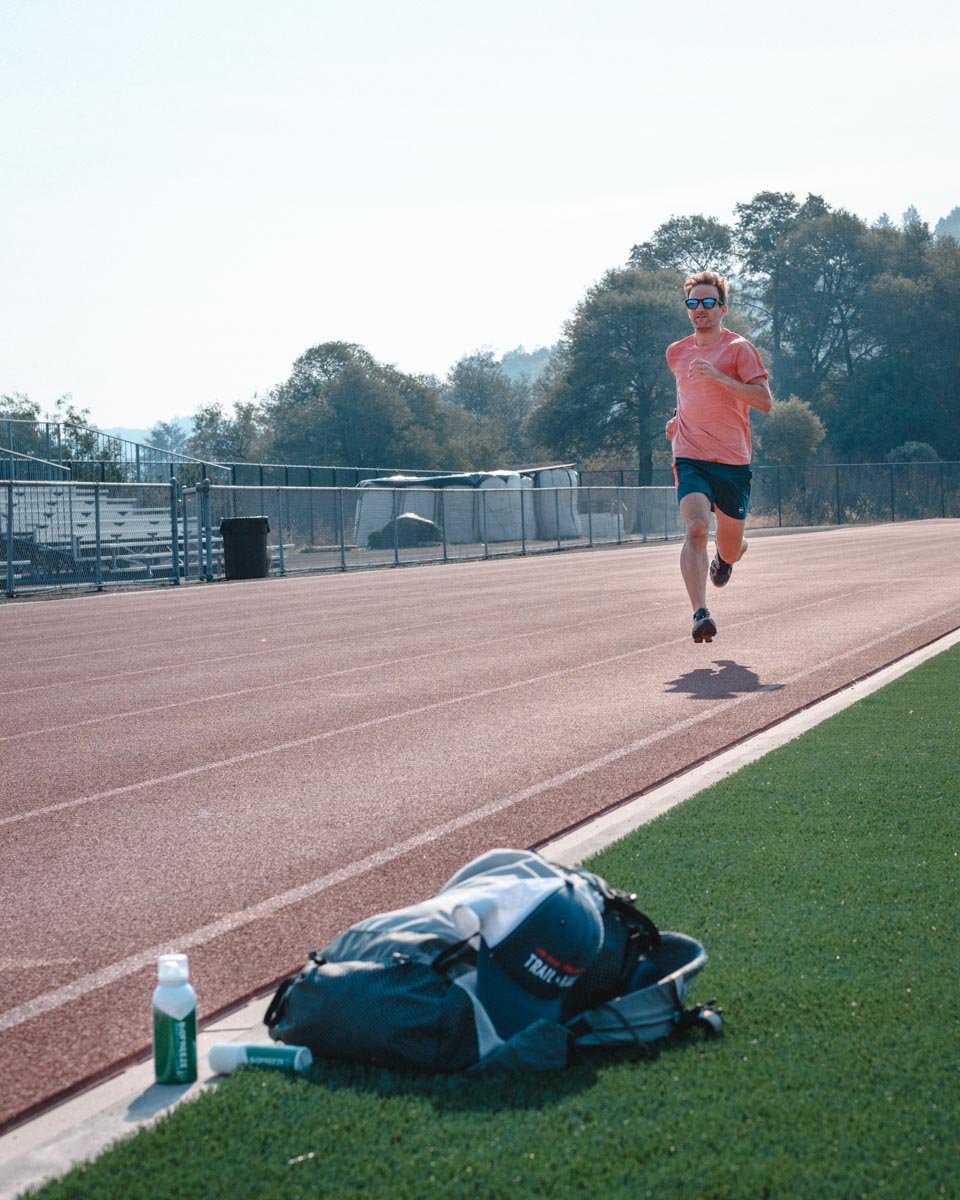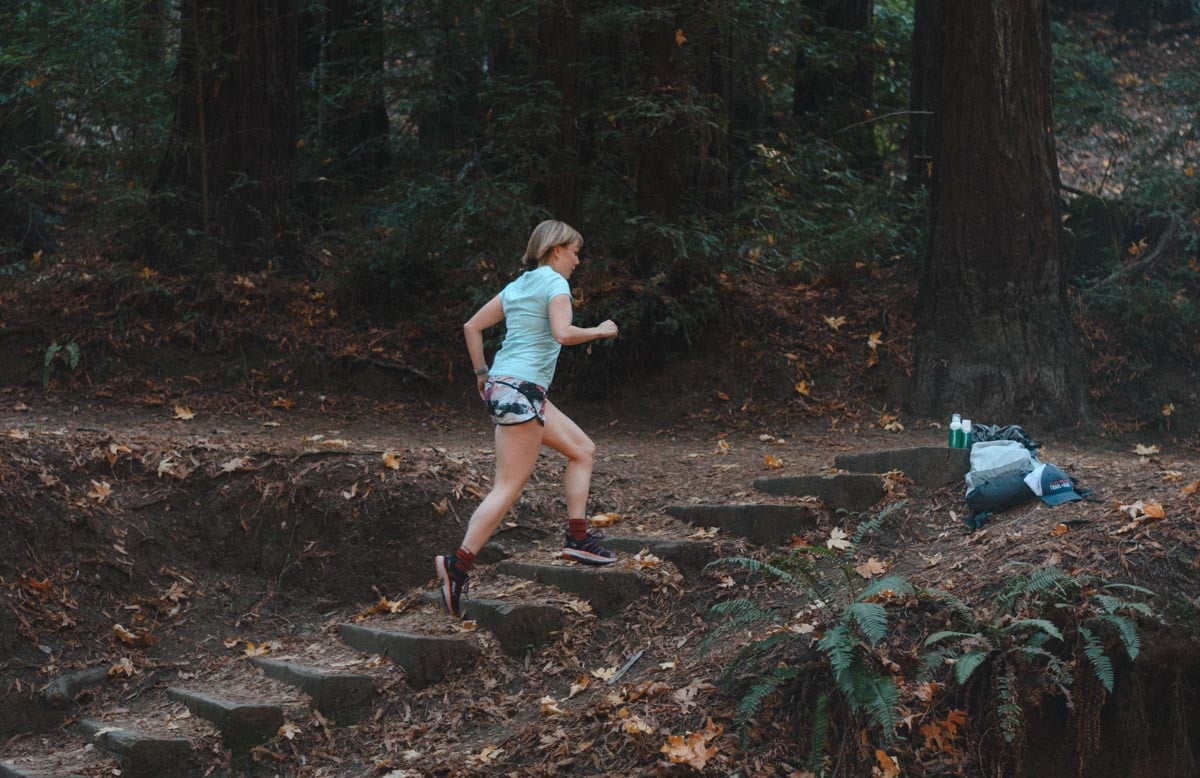What is Speed Training?
Also referred to as Speedwork, speed training, in its simplest terms is running at a pace that’s faster than your average comfortable pace.
A more recognized definition, however, would be a structured training session of running at a pace much faster than your conversational pace.
Table of Contents | Speed Training For Runners
- What is speed training?
- 4 Key benefits of speed training
- Where can I do it?
- How to run your first speed session
- Need new shoes for running fast?
- Recovery
- Enjoy the benefits of feeling strong and running fast.
The four most popular types of Speedwork are:
1.) Interval training
Interval training is where you sprint for a short distance of around 100 to 800 meters, and then either walk or jog slowly in order to recover within a set period of time.
Once recovered, you repeat the process.
The amount of intervals is up to you but somewhere in the range of 4-8 intervals is pretty standard.
2.) Fartlek training
A technique developed in Sweden, Fartlek translates to “speed play” and it’s the process of incorporating irregular bursts of speed of varying distances into your long runs.
For example, if I’m running along a footpath, I may choose to sprint from one bench to the next, jog from the second to the third and then sprint again from the third to the forth.
This is a really fun way to train for speed and actually translates excellently to trail running, simply because of the varying terrain and elevation gain/loss that you may encounter along a trail.
Varying your intensity level at irregular intervals just makes sense for trail runners.
3.) Tempo
Also known as an anaerobic threshold run, a tempo run should have an effort level at which your body is able to clear as much lactate as it produces. Put more simply, a high-effort, but sustainably-paced run.
You should be able to hold this pace for more than 20 minutes, it shouldn’t feel particularly comfortable though!
If you can monitor your heart rate whilst running by using a GPS watch with wrist HR for example, then try to have your heart rate at around 90% of maximal. Now you’re running at a tempo pace!
READ NEXT: How to Become a Morning Runner: 4 Tips for Early Morning Workouts
4.) Negative Splits
This is where your splits get faster during your workout. For example, If I run a ‘negative split’ 10k and each km is a ‘split’, then I will start my run slower than I finish, my second km will be faster than the first, my third km fast than the second, and so on…
This is a good speed training technique for getting faster over longer distances.

4 Key Benefits of Speed Training For Runners
1.) Build Muscle Mass (fast-twitch muscle fibers)
In our 30s we begin to lose fast-twitch muscle fibers but the ones you rely on most for distance running (slow-twitch), are more resistant to age.
Unfortunately, muscle fibers, required for high performances in races from 5K to the marathon, disappear at a rate of up to 1 percent each year.
But it’s okay, with a mix of strength training and speed work, you can dramatically reduce the speed of muscle loss and in fact, depending on your situation, build it!
2.) Increased Power in your Stride
Part of your speed comes from your stride; how far it can take you, as well as your cadence. Runners who have stronger legs and a good technique can spring into the air and propel themselves forward and into a longer stride.
The increased force with each stride can be improved with exercises like jump squats and split jump lunges.
RELATED: The Freedom of Barefoot Running: How-To Guide
3.) Improved Fat Burning
You burn nearly 100% fat after a speed workout or other high-intensity effort but during a long-distance run, it’s about 50%.
So during speedwork, you should be burning just carbs for energy but after a high-intensity speed session, your body stops burning carbs and turns to the fat.
A natural response from your body to resupply your anaerobic system and to fuel recovery.
4.) Fewer Injuries
When you run fast your muscles are put through a much wider range of motion. Training this way will, in time improve your flexibility. It also hits more muscles, leading to a better overall balance of strength.
A strong runner should also have better form and with good form comes fewer injuries.
On the flip side, you’re likely to pick up a few muscle strains when you start your journey to becoming a stronger runner. It happens to everyone so don’t be disheartened.
Just make sure you recover properly by doing things like eating well, stretching before and after your runs, and having a vegan protein shake post-workout.
This will improve your motivation to get right back out there and jump into your next training session.
Where can I do speed training?
If you’re looking to keep your training outdoors then the obvious place for speed work is on the track but any route that has a long enough drag with no interruptions along the way will work.
If you’re ok with running indoors then a treadmill is excellent because you can easily program in your distances/times for each interval and let the machine do all the maths work for you.
All you have to do is the hard part, run! haha.
How to run your first speed session
Using outdoor interval training as our example:
These numbers are a good starting point:
- 5x 400m at 70-85% maximum intensity
- 5x 400m at 85-100% maximum intensity
- 5x 1 minute recovery periods in between each 400m interval
400m is one lap of an athletics track. If you don’t have access to a local track then mark out 400m on your regular running route using your GPS watch. Just run for 400m and make a note of start and finish points.
If there are no visible markers in place then leave a water bottle or something of little value at both ends of your 400m stretch, to mark your turnaround points.
So after warming up, the process is:
- run your first 400m at 70-85% of your maximum intensity
- straight after (with no break) run 400m at 85-100% maximum intensity
- Then have a 1-minute walking rest break
- Repeat steps 1-3, four more times.
Finding your maximum heart rate
If you’re not sure how your maximum intensity should feel or even what it is in terms of heart rate, you can work it out simply by running, with the help of a heart rate monitor.
READ NEXT: How long does it take to run a mile?
If you don’t have one already, I recommend getting a running watch like the Garmin Forerunner 965, it has every feature you could ever want in a GPS running watch!
It’s recommended that you do this test with a partner present, just in case. Here’s how to find your maximum heart rate (sourced from polar.com):
- Warm up for 15 minutes on a flat surface.
- Choose a hill that will take more than 2 minutes to climb. Run up the hill once, building to as hard a pace as you can hold for 20 minutes. Return to the base of the hill.
- Run up the hill again. Get your heart going as hard as you can to be able to just about hold it there for 3 kilometers. Observe your highest heart rate on your watch display. Your HR max is approximately 10 beats higher than the now-noted value.
- Run back down the hill. Allow your heart rate to drop 30–40 beats per minute from where it was.
- Run up the hill once again at a pace that you can only hold for 1 minute. Try to run halfway up the hill. Observe your highest heart rate. This brings you close to your maximum heart rate. You can use this value as your HRmax to set sports zones.
- Make sure you cool down for a minimum of 10 minutes.
RELATED: Mental Tricks To Keep You Running Strong
Need new shoes for running fast?
It probably goes without saying but having a lightweight responsive shoe is going to help you run much faster.
My current recommended running shoes for going FAST are the On Cloudmonster.
Recovery
Taking time to recover properly is as important as actually running if you intend to consistently hit your training goals.
When speed training, you’re putting more stress on your muscles and body so it’s important not to overdo it too early. Be sensible and build up your speed gradually.
Let me stress that point again: recovery is as important as actually running. So make sure you have a process in place for smoothing out aches and strains as soon as you get them.
Keep it with you, in your gear bag so that you can use it right after your workout should you pick up any strains from your intensive speedwork training session.
They have recently introduced a spray version that makes it very quick to apply and provides evenly distributed pain relief around the affected area.
Enjoy the benefits of feeling strong and running fast.
I hope this article helps put you on an exciting new journey of becoming the strong and fast runner you deserve to be. Speed training for runners is revered amongst many for good reason, it’s damn tough!
But remember, the biggest rewards come from the hardest challenges. If you find your first interval training session too tough, consider reducing the interval distance and number of repeats, and whatever you do please DON’T GIVE UP, your fast and strong future self will thank you for it! 🙂





![The Best Trail Running Shoes [2024] The Best Trail Running Shoes [2024]](https://www.trailandkale.com/wp-content/uploads/2024/02/best-trail-running-shoes-Trail-and-Kale-Recommends-2024-110x75.webp)

